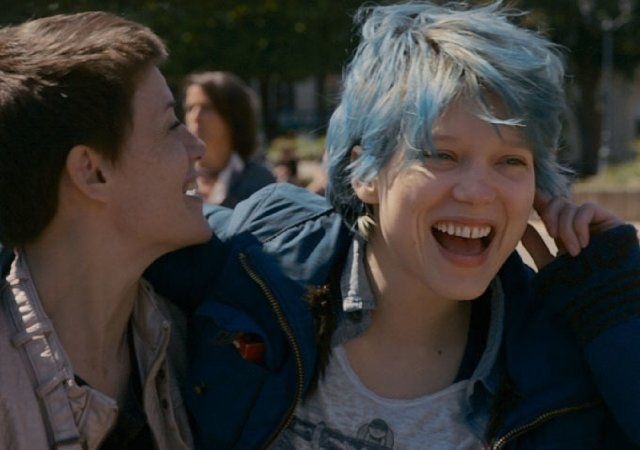Blue Is the Warmest Colour is a 2013 French romantic drama directed by Abdellatif Kechiche, based on the graphic novel by Julie Maroh. The film follows the coming-of-age and emotional evolution of Adèle, a high school student who embarks on a journey of love, identity, and heartbreak after meeting a confident, blue-haired art student named Emma.
Adèle lives a relatively ordinary life until she begins to question her attraction to men and feels a deep, inexplicable pull toward women. Her encounter with Emma marks a turning point, awakening feelings she hadn’t fully understood before. Their relationship quickly becomes intense and all-consuming, leading Adèle to explore her sexuality and sense of self more freely.

As their bond deepens, Adèle and Emma share moments of passion, tenderness, and artistic exploration. However, differences in their personalities and life paths begin to create tension—Emma is ambitious and immersed in the art world, while Adèle feels lost and yearns for simplicity and emotional closeness. Their relationship becomes a mirror for Adèle’s personal growth and struggle for identity.

The film delves into themes of love, desire, heartbreak, and the complexity of human connection. It portrays same-sex love with raw emotional realism, avoiding clichés and embracing vulnerability. Adèle’s emotional highs and lows reflect the intensity of first love and the pain of growing apart, making the film deeply relatable beyond its LGBTQ+ focus.

Blue Is the Warmest Colour received international acclaim and won the Palme d’Or at the 2013 Cannes Film Festival, awarded jointly to the director and lead actresses Léa Seydoux and Adèle Exarchopoulos. Despite some controversy surrounding its production, the film is widely recognized for its powerful performances and unflinching portrayal of love and identity, solidifying its place in modern queer cinema.
